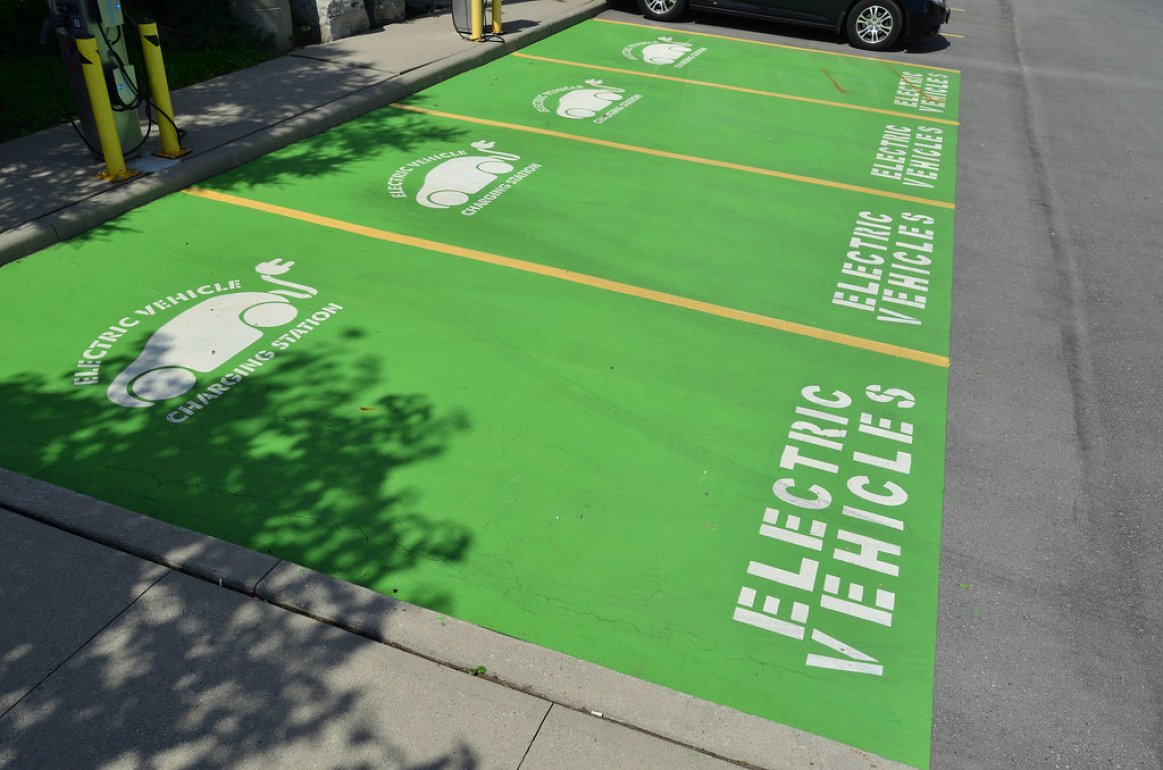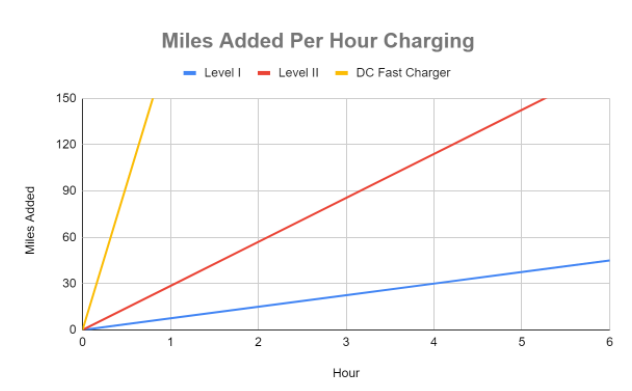
Over 2 million electric vehicles were sold worldwide in 2018. Considering around 86 million cars were sold in the top 54 world markets, that’s not a large slice of the pie. However, Bloomberg New Energy Finance projects annual EV sales will rise to 10 million in 2025, 28 million in 2030, and 56 million by 2040. Now that is a very large chunk of the pie.
Even OPEC revises projections every year for an increased amount of cumulative EVs deployed. Their 2018 projection forecasted 300 million total by 2040, per Forbes.
This projected EV growth creates a corresponding demand increase for EV charging stations. EV charging infrastructure already lags behind EV deployment, as shown by this graph from EVadoption.com.

Sufficient charging infrastructure is a necessary component of EV adoption, so there will be large growth in infrastructure to both catch up to current deployment and accompany forecasted demand growth.
What this means for solar energy installers, developers, and EPCs remains to be seen. The good news is it largely depends on how we proceed as an industry as we enter the inflection point of exponential growth. Solar companies are uniquely positioned to leverage the emerging sector for new and exciting opportunities.
Solar installers have already built a reputation in their local communities as the trusted resources for renewable electric technologies. It is a very unknown space for most people, and very few can devote the necessary time and energy to sufficiently self educate. Homeowners, businesses, and municipalities need to rely on somebody they can trust to provide consultation on what’s best for their unique situations. We’ve seen this play out with energy storage, and EVs are already at the forefront of the public mind. Just look at this year’s SuperBowl where there were four different EV commercials (one featuring Lebron James):
All the major research firms are projecting EV adoption growth to take off this decade. Now is the time for the solar industry to learn and prepare. The power electronic technology in today’s EV chargers is relatively simple compared to solar. It largely acts as a load. However, with things like vehicle to grid, fleet management, and billing software services there is certainly a lot to learn. Below is a brief summary of the different types of chargers:
Level I Charger: Uses a 120Vac connection to plug into standard residential outlets. 16A is a common output current, allowing the charger to fit on a 20A breaker. This creates only a 2kW power draw and makes for long charging times. EV owners may receive a complimentary Level 1 charger with the purchase of their vehicle, but it is likely not the best option when upgrading a home for charging capabilities.
Level II Charger: These are most commonly found in residential homes. They usually draw 7.6kW and newer models up to 9kW at 240Vac, charging a typical EV in 5-7 hours. They are also found in employee parking lots where cars are usually idle for a full workday, at storefronts, and sometimes at public charging stations.
DC Fast Charger: These can charge passenger vehicles in as little as 30 minutes and are usually anywhere from 25-100kW. They’re mostly used at public charging stations where passengers need to charge on the go (gas stations, highway rest stops, etc.). They’re also used at storefronts where customers may be parked for short periods of time.
The below graph depicting miles added per hour charging is a helpful visualization of the difference between Level I, Level II, and DC Fast chargers. The data is based on the 2020 Nissan Leaf with a built-in 50kW fast charging port. The car has 150 miles of range and a 40kWh battery (3.75 miles/kWh). The graph assumes a 2kW Level I, 7.6kW Level II, and 50kW fast charger.

Heavy-Duty DC Chargers: These are used for heavy-duty vehicles such as buses and trucks and can range anywhere from 50kW to 250kW. Most early adopters are vehicles with known, repeatable routes such as city or school buses because the energy use is easily forecasted.
There are a few major differences between EV charging and solar. A major one is in the role that software providers play in the EV charging space today. Software companies provide services such as billing, fleet management, and maps for EV operators showing the locations of the nearest open charging stations. Open Charge Point Protocol (OCPP) is the EV space’s SunSpec equivalent and is more broadly defined. Software providers and charger manufacturers need to map out more specific protocols to be compatible. In part because of this, most software companies partner with charging manufacturers to provide integrated solutions. Also, car companies are starting to develop Original Equipment Manufacturer (OEM) partnerships with charging manufacturers to offer a home charger with an EV sale.
The more we as an industry get ahead of the learning curve, the more we can understand and shape how the sector evolves. More importantly, we’ll be able to provide better consultation to the public’s common questions such as:
- Which type of charger is right for me?
- Do I need fleet management and billing services? Which ones do I need and which provider should I choose?
- Who should own my charging station? Should I take ownership and contract the O&M? Should I leave ownership to a third party and resell the kWh drawn by the charger?
- How much more power and energy will I use?
- How much solar would I need to offset that?
- Do I need to update my electrical infrastructure to accommodate my EV charging plans?
- How do I ensure my charger is safe and protected if it’s located in a public place?
- Can my EV participate in vehicle-to-grid services? What benefits would that offer me?
- Can I use energy storage to charge my vehicle at night?
The better consultation we provide, the better positioned we are to benefit from the new opportunities EV charging will create. Using bus fleets as an example, say a town adds 3 electric buses with a 100kW charger for each. That’s a potential 300kW increase in power draw, likely too large for the existing electrical service and definitely a much larger electric bill. Imagine what that would look like if the town took their full fleet electric. Instead of a full-service upgrade, it may become more feasible and economical to install a microgrid. That’s what the Antelope Valley Transit Authority in California found.
EVs, EV charging, and their interaction with the grid and distributed energy resources is another wave of the 21st-century energy economy. It is coming, in some places, it’s already here, and the solar industry is very well positioned to take advantage of the opportunities. As we’ve been for the past 10+ years, Greentech Renewables is here to help our installer partners navigate this growing space.